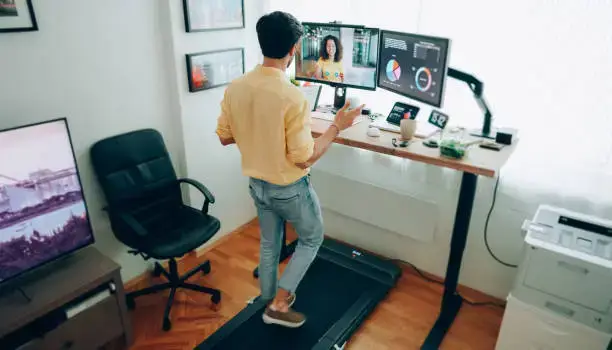In today’s fast-paced work environment, standing desks have gained popularity as a way to combat the negative effects of prolonged sitting. However, simply switching to a standing desk is not enough. To truly reap the benefits, you need to set it up correctly. This article will guide you through the steps to optimize your standing desk for better ergonomics. By following these tips, you can enhance your comfort and productivity.
Understanding Ergonomics
Ergonomics is the science of designing a workspace that fits the user’s needs. When setting up a standing desk, proper ergonomics can help reduce discomfort and the risk of injuries. For instance, poorly set up workspaces can lead to fatigue, musculoskeletal disorders, and decreased productivity. Therefore, it’s essential to take the time to adjust your standing desk correctly.
Finding the Right Height
One of the most critical aspects of setting up your standing desk is adjusting its height. Ideally, the desk should be at a level where your elbows are at a 90-degree angle when typing. Moreover, your forearms should be parallel to the ground, and your wrists should remain straight. This position helps minimize strain on your shoulders and wrists.
To find the ideal height for your standing desk, stand up straight with your feet flat on the floor. Then, raise your arms and bend your elbows to 90 degrees. The height of the desk should match the height of your elbows. If your desk is too high or too low, it can lead to discomfort over time.
Monitor Placement
Next, consider the placement of your monitor. The top of the screen should be at or just below eye level. When looking straight ahead, your gaze should naturally fall on the top third of the monitor. This alignment helps prevent neck strain and encourages good posture.
Additionally, the monitor should be about an arm’s length away from your face. If you have multiple monitors, ensure they are positioned to minimize head movement. Try to keep the primary monitor directly in front of you and the secondary one slightly to the side.
Foot Positioning
Your feet play a crucial role in your overall comfort while using a standing desk. To promote stability, keep your feet flat on the ground. Distributing your weight evenly across both feet can help reduce fatigue.
Moreover, consider using an anti-fatigue mat. These mats provide cushioning and support, making it easier to stand for longer periods. If you prefer to shift your weight, alternate between your feet or use a footrest to encourage movement.
Posture Matters
Maintaining good posture is essential when using a standing desk. Stand tall with your shoulders relaxed and back. Avoid slouching or leaning forward, as this can lead to discomfort in your back and neck.
Engaging your core muscles can help stabilize your body and support your spine. Remember to keep your knees slightly bent to avoid locking them, which can cause discomfort over time. Furthermore, periodically check your posture to ensure you remain aligned throughout the day.
Taking Breaks
Even with a well-set-up standing desk, it’s vital to take regular breaks. Standing for extended periods can lead to fatigue. Therefore, set a timer to remind yourself to take a break every 30 to 60 minutes. During these breaks, sit down, stretch, or walk around.
Movement is crucial for maintaining blood circulation and reducing muscle tension. Additionally, simple stretches can help alleviate any stiffness that may arise from standing. Therefore, don’t hesitate to step away from your desk to recharge.
Desk Accessories
While we won’t discuss specific products, the right accessories can enhance your standing desk experience. Consider using a keyboard and mouse that promote ergonomic positioning. For example, a keyboard that allows your wrists to remain in a neutral position can significantly reduce strain.
Furthermore, using a document holder can help keep your printed materials at eye level, reducing the need to bend down or strain your neck. These small adjustments can make a significant difference in your overall comfort.
Personalizing Your Workspace
Every individual is different, so it’s important to personalize your standing desk setup to suit your specific needs. Experiment with different heights and positions until you find what feels most comfortable.
Additionally, consider incorporating elements that enhance your workspace’s aesthetics. A pleasing environment can contribute to productivity and overall well-being. Therefore, take the time to make your workspace inviting and functional.
Conclusion
Setting up your standing desk for optimal ergonomics is essential for maintaining comfort and productivity. By focusing on the desk height, monitor placement, foot positioning, and posture, you can create a workspace that supports your health.
Moreover, don’t forget the importance of taking breaks and personalizing your workspace. Remember, the goal is to create a balanced environment that allows you to work efficiently while prioritizing your well-being.
In summary, by following these guidelines, you can maximize the benefits of your standing desk. Enjoy a more comfortable and productive work experience. With a few adjustments, you can transform your standing desk into a powerful tool for your health.


